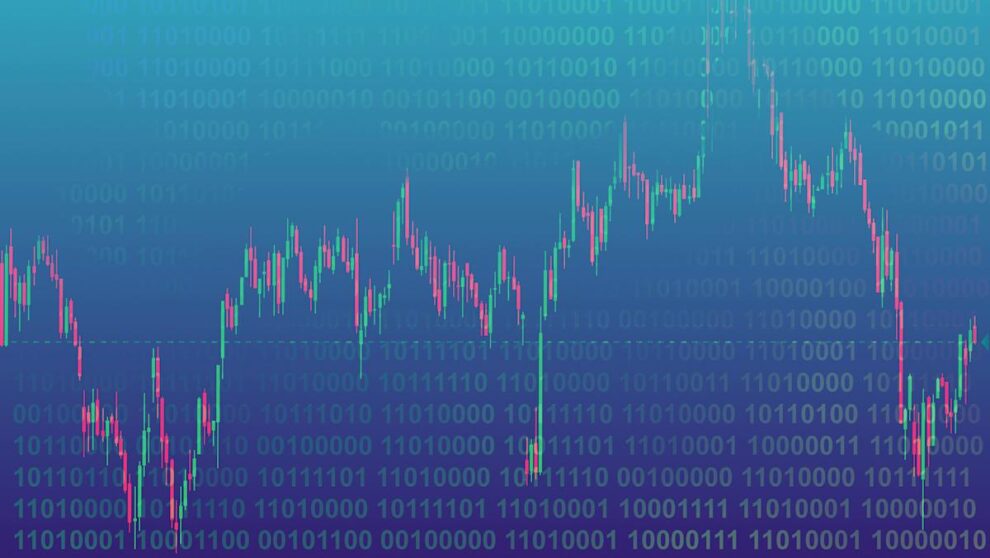00:00:02 Speaker A
The NASDAQ and S&P 500 are smashing records almost every day. And on today’s stocks and translation, we are asking a simple question. What is driving the biggest stocks right now? Is it earnings or valuation? We need to begin with a few definitions that deal with stock fundamental fundamentals. These are derived from financials that Wall Street analyzes. So just stick with me because in a minute, I’m going to tell you how each of these concepts relate to each other. First, we have forward earnings per share or forward EPS, which is just the street’s best guess of profits for each share of the company over the next 12 months. When the outlook improves, it rises. When Wall Street cuts its estimates of future profits, it falls. Next up, we have the forward PE or price to earnings ratio. It is the stock price divided by that forward EPS that we just talked about, and it tells you how many dollars investors are willing to pay for $1 of expected profit. When the multiple rises, that’s called multiple expansion. And when it falls, that’s called multiple compression. Here’s how they fit together. Share price equals forward PE times forward EPS. And here’s an example. A $10 stock with $2 of forward EPS trades at a five times forward PE. The $10 stock price equals the 5X multiple times the $2 forward EPS, and that right there is the whole engine. Now, let’s see it in the wild with Nvidia. This chart goes back a decade and it shows the Nvidia stock price in white and its forward earnings per share in green. You can see how they more or less have tracked each other over the long term. The stock price and profit expectations are closely linked over these time frames. Right now, at the right edge of the chart, price is pressing to new highs. Meanwhile, forward EPS is also near its highs. That means fundamentals are broadly supportive and the extra gap that the market is paying, that’s a multiple or rerating, as we say. Now, Amazon, it tells a different story. Through 2023, price and forward EPS, they were climbing nicely together. Then in 2024, forward EPS dropped sharply, and you can see that toward the right of the chart. As that green line fell, the stock still pushed to fresh records, but that was a rerating, thanks to that multiple increasing. Lately, it has struggled to clear that old price peak, and without a turn higher in profit estimates, that price rally is harder to sustain. So what’s driving the big five? We put forward EPS change on the vertical axis here and forward PE change on the horizontal, all in a grid. In the top left, both of our variables are up. Profits are rising and investors are paying a little bit more, and at the top right, this is when upgrades leave. Expected profits are rising while the multiple cools. Bottom left, that is a rerating. Expected profits are down, but investors are expected to pay more. And finally in the bottom right, that is a derating. We see both expected profits and the multiple are under pressure. So let’s take a look at how these concepts are playing out in the five biggest stocks in the S&P 500. Here at the top are the first three. We see that Nvidia is currently in a rerating. The multiple jumped while forward EPS, it slipped a touch. Our two levers for Microsoft and Apple are both up with modest estimates, modest estimate improvement, and a smaller multiple lift for each. Now, here are the other two stocks. Alphabet has both of its levers moving up, but the multiple is doing most of the work. This is a heavier rerating. But Amazon is in the worst position of the group, caught in a derating cycle. Profit estimates have been heading down, as we saw on the chart a minute ago. And also, Amazon’s multiple, it’s cool. It needs stabilization and forward EPS to regain its upward momentum. So putting it all together now, here’s what you watch next. First, pay attention to the forward EPS trend. Are analysts raising their profit estimates or are they cutting them? Second, the forward PE direction. Is it multiple expanding or is it compressing? Third, how are each of the names migrating around the grid that we showed before? Toward the upgrade lead in the upper left or towards the derating in the lower right? These two levers, they explain most big stock moves, not only in these stocks, but all equities, at least over the long haul. But it’s important to remember that day-to-day, there are many other factors that will send stocks up or down. Bottom line, long-term price moves come from two places, expected profits and what investors are willing to pay for them. The cleanest path for a stock is when profit estimates take the baton from the multiple. And tune in to the stocks and translation podcast for more jargon busting deep dives. New episodes can be found on Tuesdays and Thursdays on Yahoo Finance’s website or wherever you find your podcasts.









